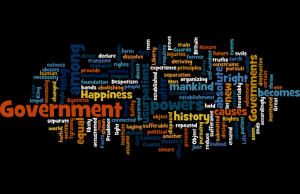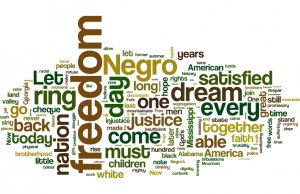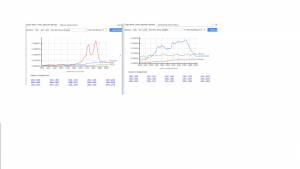Distant reading is a practice that is becoming more and more popular as our technologies and resources evolve. Distant reading allows us to take a text that we may have already read in a traditional sense and to then see it in a new light. Imagine that you have already read the novel Harry Potter and the Deathly Hallows, and you thought you were the resident expert on that book. Now imagine that I subsequently told you that there were new ways to read your book, that you had not thought about. Perhaps this new way of reading would also allow you to compare Harry Potter and the Deathly Hallows to Harry Potter and the Goblet of Fire. That is what distant reading allows us to do. It allows us to use many different digital tools to analyze and compare many different forms of literature. Each tool has its strengths and weaknesses, but they all have the same end goal. That end goal is to defamiliarize texts in a way that allows us as the reader to more efficiently understand what the author is trying to teach us.
As I mentioned before there are many different tools that allow us to reach this goal. The tool that I think is most instrumental to the understanding of patterns, as well as comparison between different texts is to create a word cloud. There are many sites that exist that allow you to take texts and make a word cloud out of them, however the one I would like to focus on is wordle.net. Its interface allows you to easily make a word cloud with just a few clicks. Word clouds will always look different depending on what texts you use but the idea behind them is the same. Here are two examples of word clouds that I have made using Martin Luther King’s I have a Dream Speech, and an excerpt from the Declaration of Independence:
As you can see although the words are different you can look through the most common words for words that are similar, or themes that may occur across that writers work. Doing this allows one to more easily grasp the overarching theme of a book or passage as well as allowing them to easily compare themes from two separate books. This process is much less time consuming than if one was to try to do this by reading and analyzing both books.
Another tool that we can use to practice distant reading is ngrams. Below is an example of what one may look like using the same two excerpts I used previously:
These graphs allow us to look through several hundred texts that span through time and see how frequently a chosen word was used. It can show you a lot about how the meaning of that word, or what that word signifies, has changed over time. It also allows you to see if words were used in tandem with one another as time went on. Much like wordle it allows you to view themes. But on a very different note it adds in a layer of how time affects a word and allows us to understand why an author may have chosen that word over any other word to get their meaning across. That thought is not one that someone normally has while reading a book. By defamiliarizing it and looking at that word through a tool, like making an ngram, we discover new meaning, allowing us as reader to more deeply understand what the author is trying to say.
Although there are perks to distant reading it is not necessarily the way that things should be carried out hence forth. Like Clements says, distant reading should be used in conjunction with more traditional close reading to get a more full understanding of the text you have just read. Although all three of the authors that we have read have said that we are advancing in a way that allows distant reading and computational understanding more viable, we should not throw away the close reading of the past. If we combine both of these types of reading as we continue to read, I think we may find as a society that we get more from our reading experiences, as well as understanding more of what we read.



2 replies on “What is Distant Reading?”
James,
You have such a strong grasp on the definition of text analysis! For someone reading your blog with no knowledge of distant reading could easily figure it out. Your example of Harry Potter in the beginning was an extremely good example, seeing that there are so many novels in the series! Also, your mention of picking out what an author is trying to “teach us” made me think about using fables. I wonder if a word cloud could pick out the moral of a story. It would also be interesting to plot the words most connected to a moral on an N-gram to analyze if the same morals are still important or expressed in most recent literature.
Nice job!!
James,
I agree with Tyler, it’s a very clear blog about distant reading. But don’t you guys think if distant reading tools will help us even with finding the moral of the story we’ll become useless readers after all?
Great job James:)